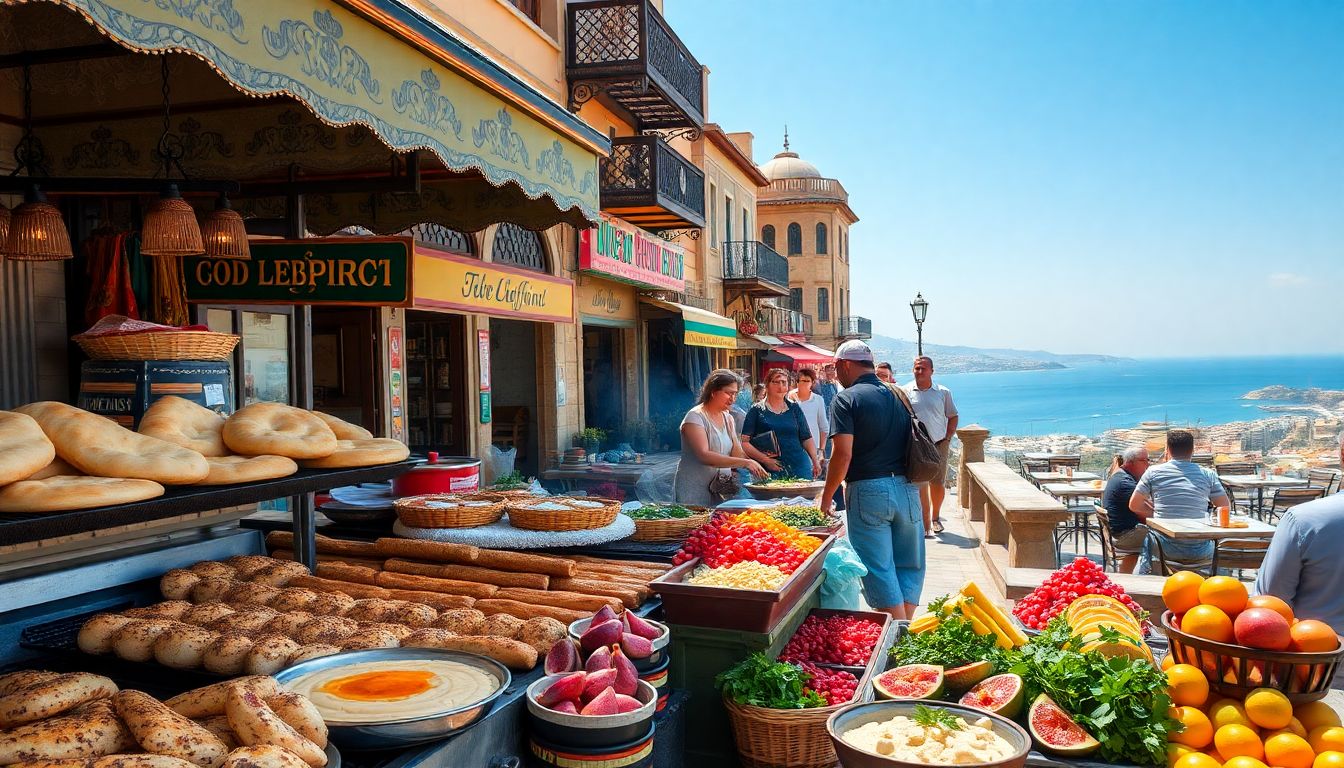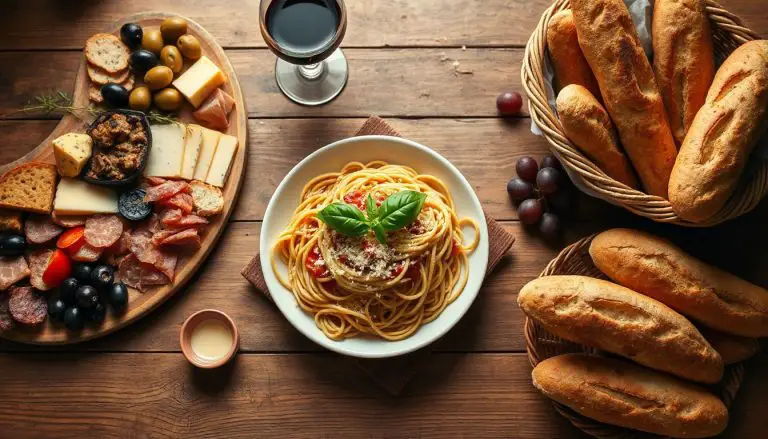The Best Tourist Foods in Lebanon: A Culinary Journey Through the Land of Cedars

Introduction
Lebanon’s food scene is famous around the world. Every bite tells a story from its long history and diverse culture. If you love trying new dishes, Lebanon is a must-visit destination. Its cuisine blends flavors from many influences, including Middle Eastern, Mediterranean, and Ottoman. Food is a big part of Lebanese tradition and hospitality. When you travel here, tasting local foods makes your trip unforgettable.
Authentic Lebanese Dishes That Define the Culinary Landscape
The Significance of Traditional Recipes in Lebanese Culture
Food in Lebanon isn’t just about eating. It’s about connecting to the past and family. Many recipes are handed down over generations. Street foods and home-cooked meals help keep traditions alive. For locals, sharing a meal is sharing stories and history.
Must-Try Dishes for Visitors
Lebanon offers a variety of dishes to satisfy every palate. From fresh salads to hearty meats, each dish is bursting with flavor. Exploring these foods helps you understand Lebanese culture better.
Top Lebanese Foods Every Tourist Should Experience
Manakish: The Lebanese Breakfast Staple
Manakish is what many locals start their day with. It’s a flatbread topped with za’atar, cheese, or ground meat. Freshly baked, it’s warm and crispy. In Beirut and Mount Lebanon, you’ll find countless bakeries serving authentic manakish. Simply order it with a cup of Lebanese tea for the perfect breakfast. Don’t be shy to ask for it hot!
Kibbeh: Lebanon’s National Dish
Kibbeh is loved across Lebanon. Its many forms include raw (Kibbeh Nayeh), baked, and fried versions. Made with bulgur, minced meat, and spices, it’s packed with flavor. Tripoli and the Beqaa Valley are famous for traditional kibbeh. If you try it for the first time, go slow and savor the spices. It’s a dish every foodie should taste.
Tabbouleh and Fattoush: Fresh Lebanese Salads
Two salads define Lebanese cuisine—Tabbouleh and Fattoush. Tabbouleh is made with parsley, bulgur, tomatoes, and lemon. Fattoush features crispy pita chips, cucumbers, and herbs. Both are refreshing and perfect for hot days. Find authentic versions at local markets and small eateries. These salads balance rich foods with their bright flavors.
Shawarma and Kafta: Lebanese Fast Food Classics
No trip is complete without trying Lebanese street fast food. Shawarma, marinated meat cooked on a vertical spit, is juicy and flavorful. Kafta, spiced ground meat skewers, are equally popular. In Beirut and Sidon, busy street stalls serve top-notch versions. Look for places where locals go—this is where the real magic happens. Fresh toppings and good bread make all the difference.
Lebanese Sweets and Desserts That Delight Tourists
Baklava and Knafeh: Rich, Nutty, and Syrupy
Lebanese desserts are sweet and indulgent. Baklava’s layers of flaky pastry, nuts, and syrup are irresistible. Knafeh, a cheese-based pastry soaked in syrup, is popular in summer. Choose bakeries in Beirut or Tripoli that are known for their baklava. These treats are best enjoyed with Arabic coffee or tea.
Lebanese Mahshi and Fruit-based Treats
Mahshi, stuffed vegetables like grape leaves, are common during festivals. They’re full of rice, herbs, and sometimes meat. Seasonal fruit desserts, like figs or pomegranates, also shine at markets. These simple yet tasty treats reflect Lebanon’s rich harvest and local flavors.
Beverages That Complement Lebanese Cuisine
Raki and Arak: Traditional Lebanese Spirits
Arak, the local spirit, is made from grapes and anise. It’s usually served with ice and water, turning cloudy. Many bars in Beirut specialize in authentic arak. It’s often enjoyed at family gatherings and celebrations. Drinking it responsibly adds to your cultural experience.
Lebanese Coffee and Herbal Teas
Lebanese coffee is thick and strong, often flavored with cardamom. It’s served in tiny cups and enjoyed with sweets. Many cafes in Beirut pride themselves on their coffee aromas. Herbal teas made from mountain herbs also offer a calming finish after meals.
Where to Find the Best Culinary Experiences in Lebanon
Top Food Markets and Food Tours
Lebanese markets, or souks, are perfect for sampling local foods. In Beirut’s souks, you can taste fresh olives, cheeses, and baked goods. Guided food tours lead you through these lively spots, sharing stories and tips. It’s a delicious way to explore the city.
Iconic Restaurants and Hidden Gems
Some restaurants are famous across Lebanon, serving classic dishes with a modern twist. In each region, small family-owned spots often serve the most authentic foods. Booking in advance is recommended. Ask locals for their favorite hidden gems—these often offer the best experiences.
Conclusion
Lebanon offers a colorful tapestry of flavors and dishes that become memories. Its food tells stories of history, family, and tradition. Discovering these foods makes your trip more meaningful. Always respect local customs and enjoy responsibly. Indulge in the rich tastes of Lebanon, and let your palate take a journey through this beautiful land. Your culinary adventure awaits!







